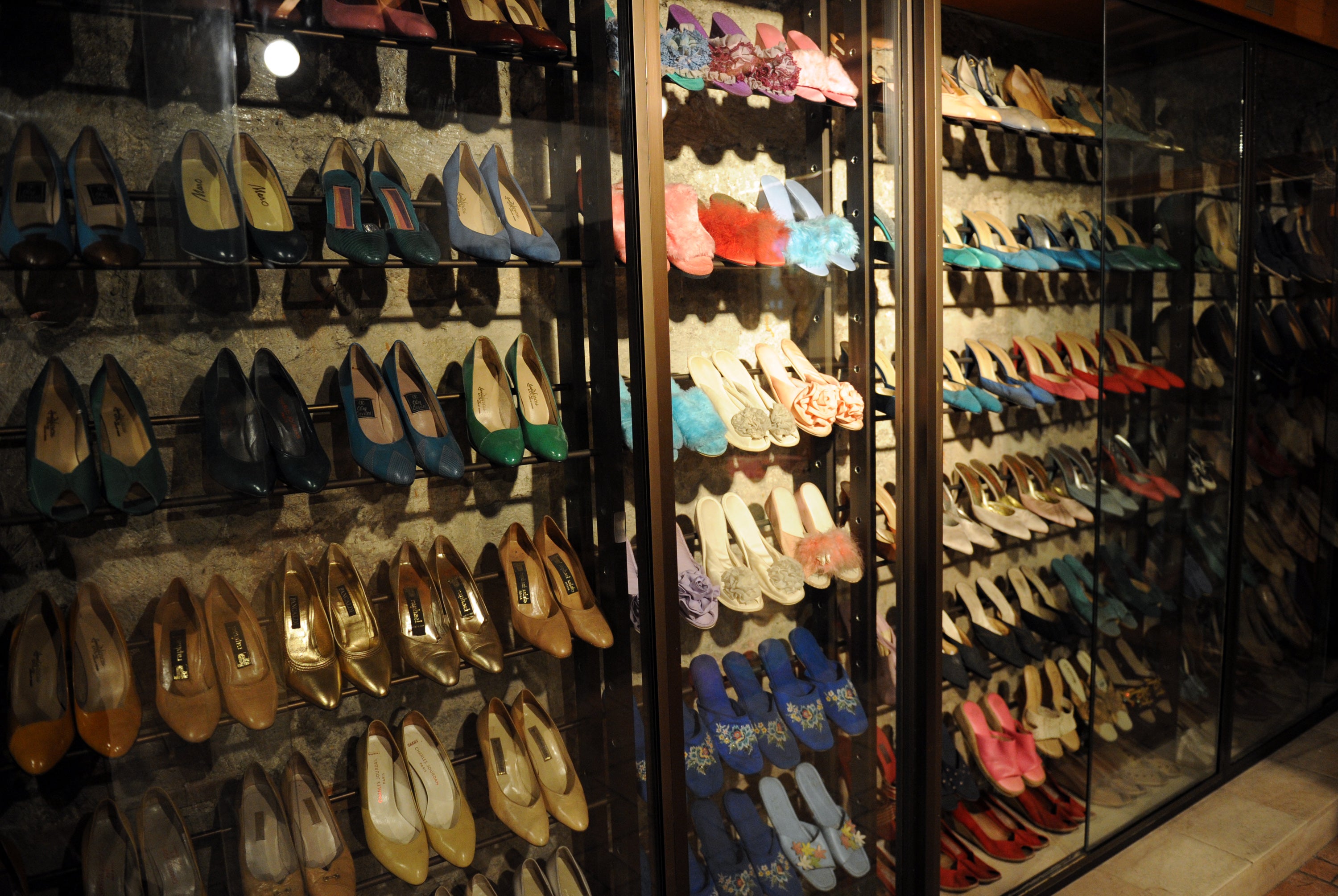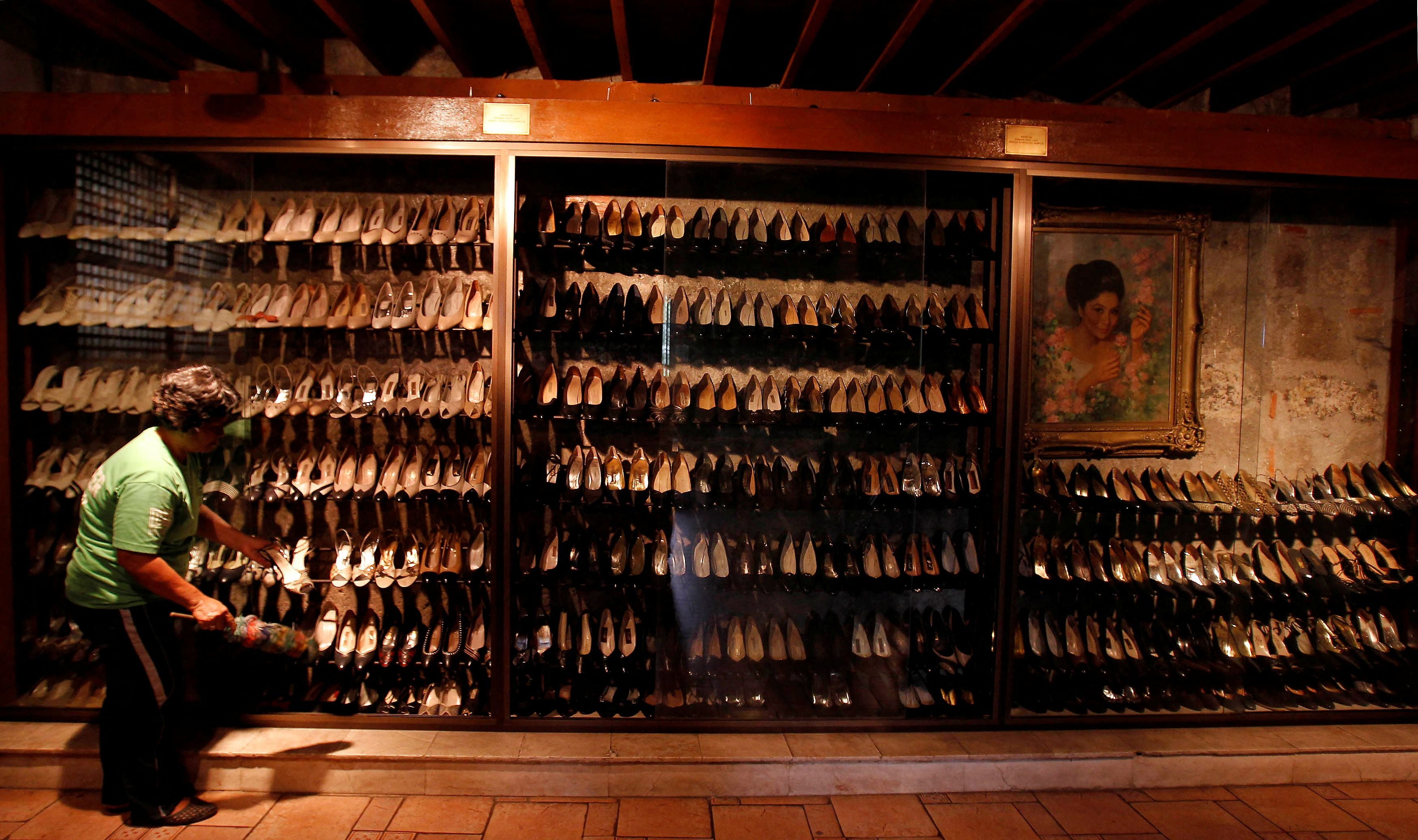A shoe-in: Filipino election pushes notorious Marcos family – and Imelda’s footwear – back into the limelight
It was reported that the former first lady had nearly 3,000 pairs of shoes

Your support helps us to tell the story
From reproductive rights to climate change to Big Tech, The Independent is on the ground when the story is developing. Whether it's investigating the financials of Elon Musk's pro-Trump PAC or producing our latest documentary, 'The A Word', which shines a light on the American women fighting for reproductive rights, we know how important it is to parse out the facts from the messaging.
At such a critical moment in US history, we need reporters on the ground. Your donation allows us to keep sending journalists to speak to both sides of the story.
The Independent is trusted by Americans across the entire political spectrum. And unlike many other quality news outlets, we choose not to lock Americans out of our reporting and analysis with paywalls. We believe quality journalism should be available to everyone, paid for by those who can afford it.
Your support makes all the difference.The election of Ferdinand “Bongbong” Marcos Jr as president of the Philippines has pushed the controversial family, best known for excess, back into the international spotlight.
During his presidency in the 1960s to 1980s, Ferdinand Marcos Sr – the new president’s father – along with his wife Imelda Marcos, stole billions of dollars from the Filipino people, amassing a personal wealth experts have estimated to be up to $10bn (£8bn) before they were finally caught in 1986.
Marcos Sr’s premiership is largely remembered for its corruption and brutality including his rule as a dictator under martial law from 1972 to 1981 before being forced from office and fleeing the country in 1986.
Imelda Marcos, the former first lady, however, was known particularly for her opulent lifestyle, eye for luxury and matchless shoe collection.

When protesters stormed Malacanang Palace in 1986, it was famously discovered that more than 2,700 pairs of shoes had been left behind in Imelda’s wardrobe. She was later quoted as saying: “They went into my closets looking for skeletons, but thank god, all they found were shoes, beautiful shoes.”
Thirty years later, hundreds of pairs of the first lady’s obsession can still to be found at the Shoe Museum in the northern city of Marikina while another collection is in the National Museum of the Philippines.
Some 800 pairs are on exhibit at the museum, which opened in 2016, and venue manager Gina Romero said they came from a condominium in the prime business district of Makati.
The shoes are a mix of local and imported brands – pairs by Ferragamo, Givenchy, Chanel, Christian Dior, Charles Jourdan and Bally, along with well-known local brands. They come in high heels, flats, sandals, boots and slippers – many glittering with bling, all still in prime condition.
Local makers reportedly gave the then-first lady 10 pairs of shoes a week, according to ABC News Australia.

According to a museum staffer, a pair of local shoes cost between $6-11 while imported shoes cost up to $100 or more a pair. Of the remaining pairs of shoes in the Imelda collection, 253 are on display, while 467 are in storage, according to local reports.
In 2012, the Associated Press reported that more than 1,000 pairs had been damaged by termites and mould, after years of being stashed in boxes. They were only discovered after being drenched in rainwater that leaked through the ceiling of the museum hall they were locked in.
A 2017 documentary, spotlighted Imelda Marcos’ turbulent political career and her opulent lifestyle. The former first lady spoke about her fashion obsession in the documentary called The Kingmaker. “When I became first lady, it became demanding for me. I have to dress up and make myself more beautiful,” Imelda, now 92, said in the trailer for film. “Because the poor always looks for a star.”
Now, Marcos Jr is set for a surprise ascension to the country’s highest office after he trounced bitter rival Leni Robredo to become the first candidate in recent history to win an outright majority in a Philippines presidential election.

Marcos Jr fled into exile in Hawaii with his family during a 1986 “people power” uprising that ended his father’s 20-year autocratic rule, and has served in congress and the senate since his return to the Philippines in 1991. Ferdinand Marcos Sr died in 1989.
“There are thousands of you out there, volunteers, parallel groups, political leaders that have cast their lot with us because of our belief in our message of unity,” Marcos Jr said in a statement streamed on Facebook, while standing beside the Philippine flag.
Thousands of opponents of the senior Marcos suffered persecution during a brutal 1972-1981 era of martial law, and the family name became synonymous with plunder, cronyism and extravagant living, with billions of dollars of state wealth disappearing.
Around 400 people, mostly students, staged a protest outside the election commission on Tuesday against Marcos Jr and citing election irregularities.
The Commission on Election (Comelec), which said the poll was relatively peaceful, also upheld its dismissals of complaints filed by different groups, including victims of martial law, that had sought to disbar Marcos Jr from the presidential race based on a 1995 tax evasion conviction.
Join our commenting forum
Join thought-provoking conversations, follow other Independent readers and see their replies
Comments